Virus and bacterial diseases
LaFrance virus disease
Of all the diseases confronting mushroom growers, none have been the subject of more confusion than viral diseases. Viral diseases can be confused with the effect of poor cultural practices or the bacterial disease mummy. Since no known commercial mushroom strain is resistant to viruses, growers must incorporate preventive measures into the IPM plan and rigorously carry out control measures.
The virus lives in mushroom spores and mycelium (spawn). Infected spores spread the disease to other new crops. Infected mycelium (spawn) may survive in the bed boards or quickly spread in bulk phase III facilities. Spores survive many years and can be released during farm renovations.
Symptoms (Figure 1-4):
- Portabellas don’t size up; lower yield, Fig 1.
- Bare areas with few pins and mushrooms, Fig 2.
- Premature opening of the veil (small caps)
- Mild yield loss
Severe infection:
- “Drumstick” (small caps, long stems) Fig 3.
- Weak growth in the casing that often disappears over time
- Die-back of mycelium in the compost, Fig 4.
- Stems discolor quickly when cut
- Significant yield loss
Control:
- Exclude, eradicate, or reduce inoculum.
- Mushroom spores at spawning
- Mushrooms should be harvested before they mature and the caps open, releasing spores.
- Infected mycelium at spawning or casing
- Isolate the crop.
- Regularly scheduled replacement of filters/filtration
- Air movement—high positive pressure in spawning and casing areas
- Practice postharvest steaming to eliminate pathogens and mushroom mycelium/spores between crops.
- Virus-infected mycelium in the wooden tray/bed boards
- Virus-infected mushrooms and spores left on the bed
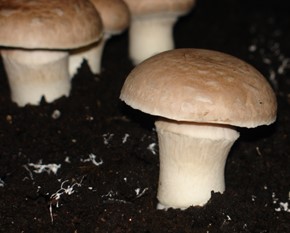 figure 1 |
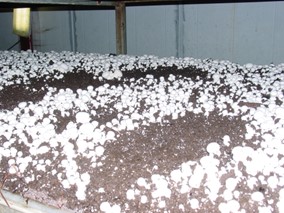 figure 2 |
 figure 3 |
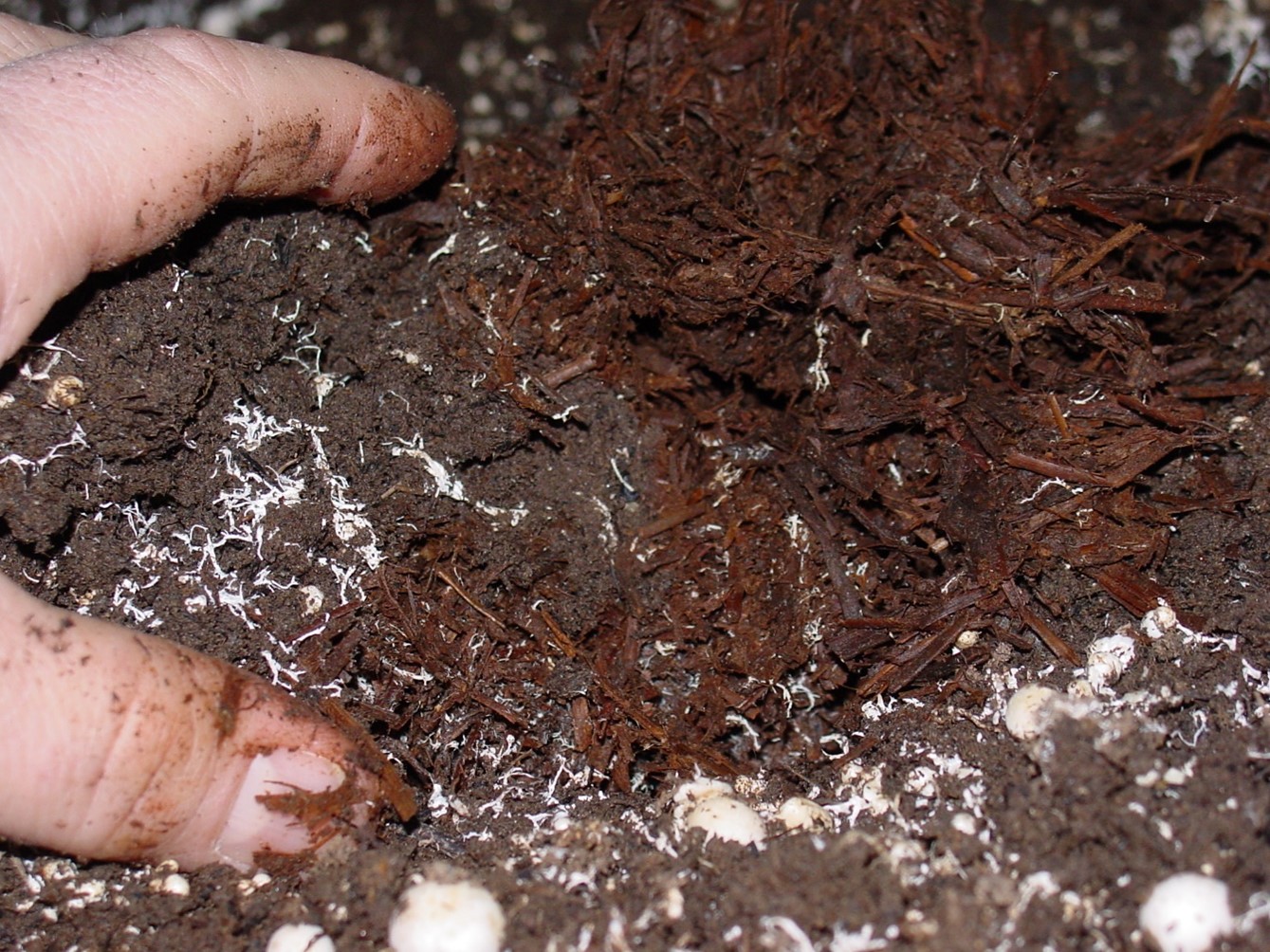 figure 4 |
Bacterial diseases
1) Bacterial Blotch
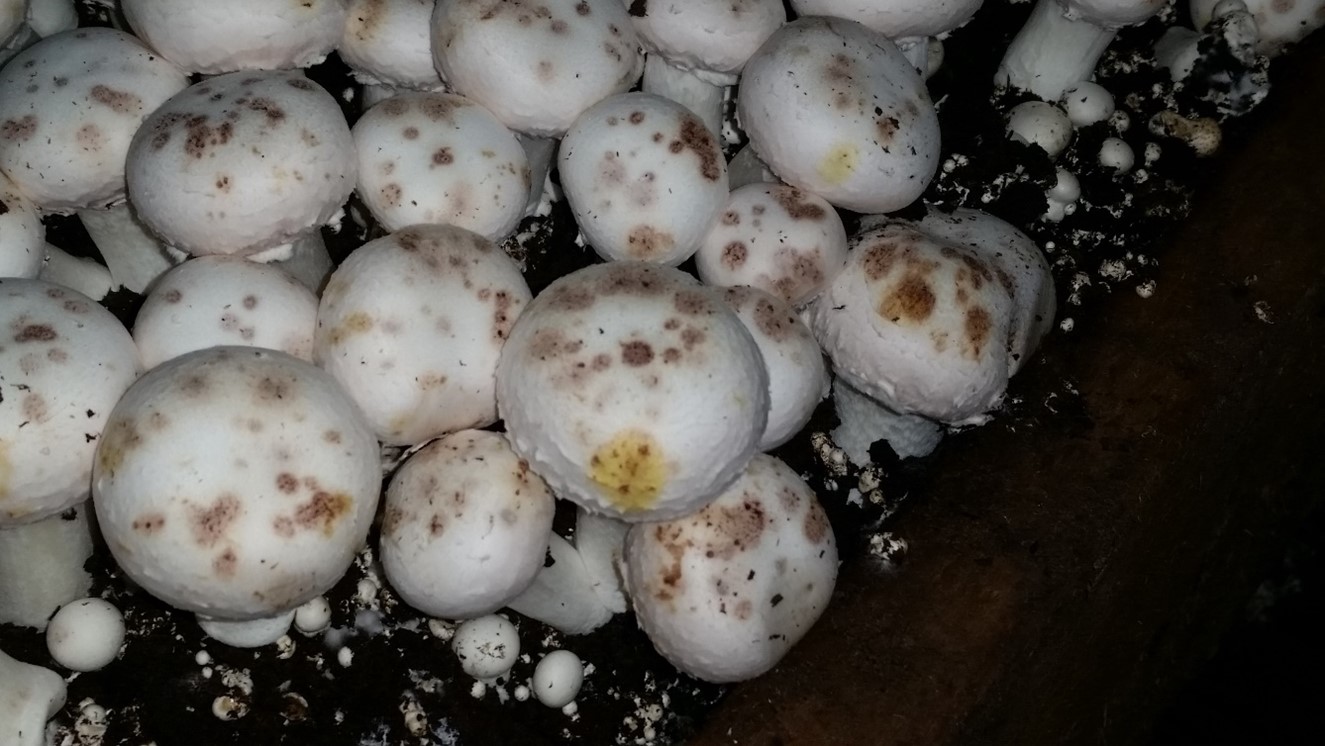
Signs and Symptoms:
- Superficial discoloration which leads to lower quality in the marketplace
- First pale yellow, then darkens to golden yellow to brown color.
- Bacterial pathogen: Pseudomonas tolaasii, recently other species have been found to cause similar symptoms
2) Mummy Disease
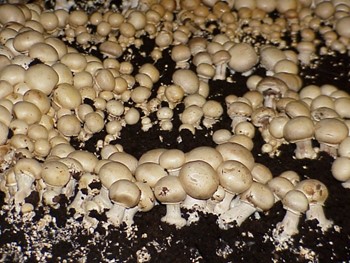
Signs and Symptoms:
- Stunted growth, swollen base
- Sometimes mushrooms develop curved stipe with translucent, longitudinal streaks on the side
- Tissue appearance: spongy, dry and leathery
- First break can be harvested; second break mushroom does not grow in the affected area
- Scientific name: Pseudomonas species
By David M. Beyer, Penn State University
Hygiene at the end of the growing cycle
Lately, several farms have seen some symptoms of virus which means more focus on hygiene is necessary. Hygiene includes all measures aimed at minimizing the risk of disease and pests developing and spreading. The greatest risk of contamination from diseases and pests is at the time of filling and when the harvest starts because from that moment on several people enter the growing rooms, but there are also risks in other parts of the cultivation cycle like during emptying the grow rooms and that got forgotten on many occasions. Much of it is produced by humans and is preventable.
To reduce the chance that a few traces of diseases or insects still survive in the growing rooms after the last harvest day, it is vital to cook out the growing rooms. To ensure that all diseases and pests are killed, it is necessary to heat the entire cultivation room to 70 ° C for 12 hours by means of steam. By entire growing space is meant that the compost also reaches this temperature for 12 hours. Often, out of cost or time savings, it is chosen to shorten the time, or the temperature is kept lower, which has the risk that spores can survive. However, to be sure you kill all spores, 70 °C is the benchmark for 12 hours, especially if there are diseases or pests on your farm.
After cooking out, the new growing cycle starts, so it is important that from this moment on no traces of mushrooms, spores or flies end up in the growing area. This is often neglected during emptying, which means that the usefulness of (costly!!!) cookout has been for nothing. Therefore, when emptying, observe the following rules:
- Make sure that the people who empty the room wear clean clothes and footwear.
- Do not allow unauthorized persons when emptying.
- Always enter the cultivation area to be emptied from the outside, so not from the work corridor.
- If possible, do not pause during emptying, but only when the entire cell is empty, and the large back door is closed.
- Let the people who work at emptying not have breaks in the same area as the harvesters.
- Use only clean and sanitized material.
As soon as the growing room is empty, close the large back door as soon as possible. After this, it is important to start cleaning the growing area, shelving, and all used materials with water as quickly as possible, preferably with high pressure. Replace the spore filters, hang new fly plates to catch the first insects, and the cell is ready to be filled. If necessary, you can still disinfect the cultivation area.
Erik de Groot
Global Agriculture Services
This email address is being protected from spambots. You need JavaScript enabled to view it.























